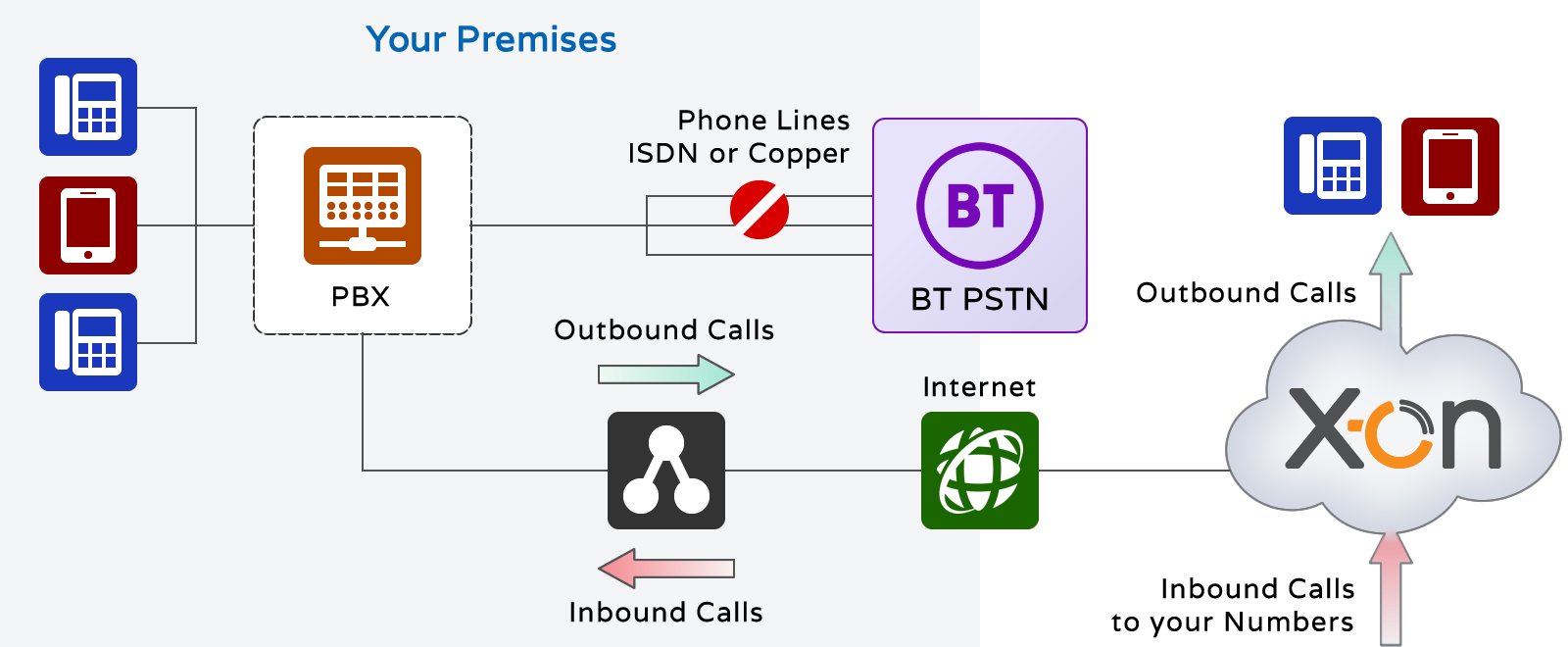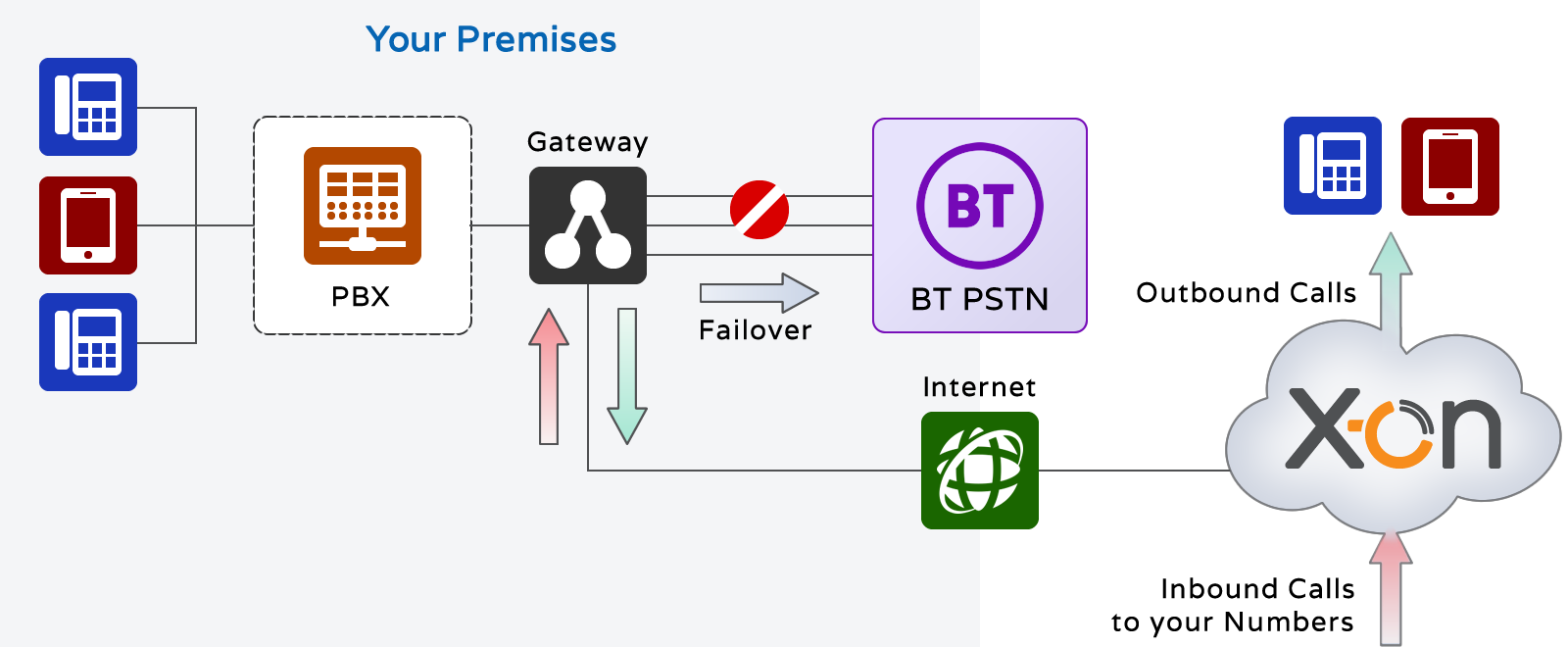A SIP trunk can be used to receive and make calls using broadband or other data connections instead of traditional phone lines.
An X-on SIP Trunk will give you business quality phone calls with big savings on monthly bills. Optional add-ons like Call Recording and Itemised Billing make X-on the supplier of choice.
What is a SIP Trunk?
A SIP trunk is a way of routing your inbound and outbound phone calls over the Internet, or via a private data connection, instead of using traditional phone lines.
A SIP trunk is not physical wiring, but an arrangement that can use existing high speed broadband connectivity to carry your calls between your phone system and a telephony provider.
Most modern phone systems, including PC based software systems like Asterisk and 3CX, support SIP trunks. For older systems, you can use a ‘Gateway’ which is a box that plugs into your phone system and makes a SIP trunk look like an ordinary phone line.
SIP Trunk:

SIP Trunk using Gateway:

What does it Cost (or how much do I save)?
Typically a SIP trunk will cost you about £2.50 per channel per month, so about a quarter of a similar landline rental. But the biggest savings are in call costs where charges can be as low as 0.5p per minute for landline calls – less than a tenth of many landline operators. You have to factor in the cost of Internet bandwidth, but your business will have this cost anyway. So you could be looking at a saving of between 50 and 75% on your phone bills, depending on your current calling patterns.
X-on’s helpful sales advisors will find the best package to suit your business and growth plans.
What are the Benefits?
Cost saving is the most obvious benefit of a SIP trunk over traditional telephony. You need less phone lines, so less rental, and the cost of phone calls can reduce dramatically.
You can add on features to your SIP trunk like Call Recording of all inbound and outbound calls, securely stored in the cloud, and Itemised Billing (subject to your phone system) so call costs can be attributed to extensions and departments.
And with a SIP trunk, your numbers can be easily moved to a new location when you move – even if it’s in an emergency.
How much Bandwidth do I need?
A SIP trunk can be used with ‘compressed’ and ‘non-compressed’ phone calls. With the cost of bandwidth going down all the time, and availability going up, most companies opt for ‘non-compressed’, which means a phone call uses the same bandwidth as it would on an ISDN phone line. Compressed calls save bandwidth by a factor of 3 or 4 and there will be a slight reduction in quality, but not one you would normally notice.
You should allow 100Kb/s per phone call, upload and download, for non-compressed phone calls. That means a broadband connection with a minimum of 2Mb/s upload speed (usually less than the download speed) can handle 20 simultaneous calls i.e. 20 people talking at once.
This calculation assumes that the broadband connection is only used for phone calls. Generally it is a good idea to dedicate a connection for telephone traffic and not mix it with data traffic which can impact on quality. If you do mix traffic, you need to be aware of the requirements to impose Quality of Service (QOS) rules on your connections and you should seek advice from an IT specialist who looks after your network.
How do I start?
Call our Sales team on 0333 332 0000 to find out how easily SIP Trunking can start reducing your call costs.
Why use X-on?
- UK Network Operator specialising in call centre cloud technology
- 14 years market experience
- Supported integration with your existing systems
- Friendly UK sales and support staff
- Satisfied customers in health, emergency services, and retail
What Options are there?
- Call Recording
- Low per channel per month cost
- Encrypted recordings stored securely
- Secure web access from any location
- Retention from 3 months to 30 years
- ISO9001 and ISO27001 compliant security
- Itemised billing by extension at no charge (if supported by PBX)
- International numbers
- Porting your existing number
